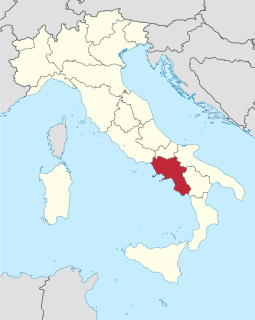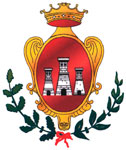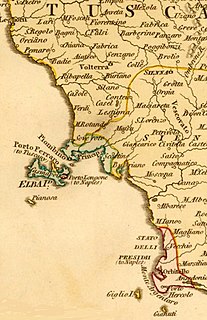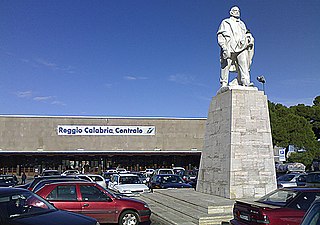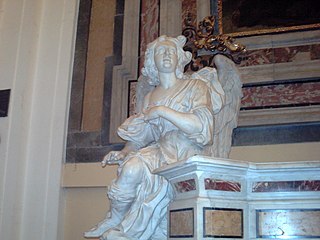Porto (Italian : "port") is one of the thirty quarters ("quartieri") of the city of Naples. [1] It covers 1.14 square kilometres (0.44 sq mi), and as of 2009, had 5738 inhabitants. [2]

Italian is a Romance language of the Indo-European language family. Italian, together with Sardinian, is by most measures the closest language to Vulgar Latin of the Romance languages. Italian is an official language in Italy, Switzerland, San Marino and Vatican City. It has an official minority status in western Istria. It formerly had official status in Albania, Malta, Monaco, Montenegro (Kotor) and Greece, and is generally understood in Corsica and Savoie. It also used to be an official language in the former Italian East Africa and Italian North Africa, where it plays a significant role in various sectors. Italian is also spoken by large expatriate communities in the Americas and Australia. Many speakers of Italian are native bilinguals of both standardized Italian and other regional languages.
Porto is in the 2nd municipality subdivision (which covers Avvocata, Mercato, Montecalvario, Pendino, Porto, and San Giuseppe), [1] adjacent to the main passenger and freight terminals of the Port of Naples, in the historic part of the city.
During the end of the 19th century and the beginning of the 20th, Porto was the subject of a demolition and urban renewal program. Its strategic location near the port made it a target of Allied Forces bombings during World War II.

Urban renewal is a program of land redevelopment in cities, often where there is urban decay. Urban renewal often refers to the clearing out of blighted areas in inner cities to clear out slums and create opportunities for higher class housing, businesses, and more. Modern attempts at renewal began in the late 19th century in developed nations, and experienced an intense phase in the late 1940s under the rubric of reconstruction. The process has had a major impact on many urban landscapes, and has played an important role in the history and demographics of cities around the world.

The Allies of World War II, called the "United Nations" from the 1 January 1942 declaration, were the countries that together opposed the Axis powers during the Second World War (1939–1945). The Allies promoted the alliance as a means to control German, Japanese and Italian aggression.

World War II, also known as the Second World War, was a global war that lasted from 1939 to 1945. The vast majority of the world's countries—including all the great powers—eventually formed two opposing military alliances: the Allies and the Axis. A state of total war emerged, directly involving more than 100 million people from over 30 countries. The major participants threw their entire economic, industrial, and scientific capabilities behind the war effort, blurring the distinction between civilian and military resources. World War II was the deadliest conflict in human history, marked by 50 to 85 million fatalities, most of whom were civilians in the Soviet Union and China. It included massacres, the genocide of the Holocaust, strategic bombing, premeditated death from starvation and disease, and the only use of nuclear weapons in war.
Prominent intact architectural landmarks in the area include the University of Naples, the Naples "Borsa", and the Stock Market building.
